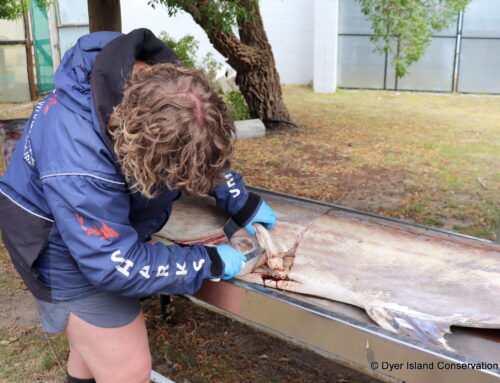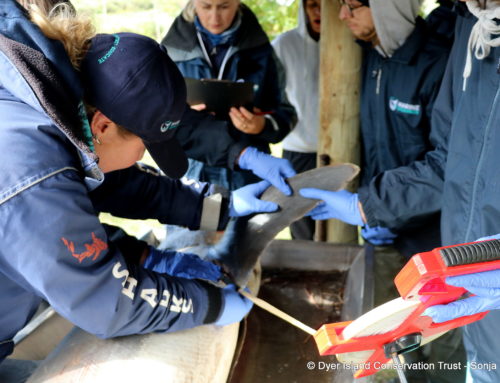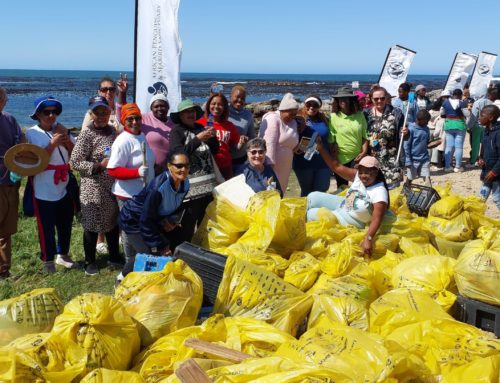Stranded whale at Die Plaat
September 30, 2010 by dyertrust
 It is always exciting when whales are found stranded. Of course we would rather see them alive in the ocean, but when they do die and wash ashore there is so much information for us as scientists to obtain. Skin samples can be used for DNA-analysis, which can tell us the sex of the individual as well as the relationship to other animals in our databases. The baleen as well as blubber can be analyzed for isotopes and fatty acid composition, which enables us to trace back the composition of the animals diet, since species specific isotopes are found in different fish species as well as krill. If it is a toothed whale, we can use the teeth to estimate the age of the animal, by counting the layers of dentine in a cross section.
It is always exciting when whales are found stranded. Of course we would rather see them alive in the ocean, but when they do die and wash ashore there is so much information for us as scientists to obtain. Skin samples can be used for DNA-analysis, which can tell us the sex of the individual as well as the relationship to other animals in our databases. The baleen as well as blubber can be analyzed for isotopes and fatty acid composition, which enables us to trace back the composition of the animals diet, since species specific isotopes are found in different fish species as well as krill. If it is a toothed whale, we can use the teeth to estimate the age of the animal, by counting the layers of dentine in a cross section.
If the animal is fresh, we can obtain a lot more information and conduct a necropsy, where we can take stomach samples and investigate if the animal had any parasites in the lungs or intestines etc, and any scars on the skin will indicate if the animal has been entangled in fishing gear or hit by ship propellers. These samples can help us to better understand the live animals and thereby help us to protect them.
 The beach of Pringle Bay was very rocky and unfortunately quite full of rubbish, which told us that there must had been some huge waves coming in over the last days. The whale carcass was laying squeezed inbetween some rocks and it had been dead for at least a week. It was a 9 m juvenile
The beach of Pringle Bay was very rocky and unfortunately quite full of rubbish, which told us that there must had been some huge waves coming in over the last days. The whale carcass was laying squeezed inbetween some rocks and it had been dead for at least a week. It was a 9 m juvenile A call was received telling us about a washed up whale at a nearby stretch of beach called Die Plaat.The crew headed off to gather samples which we send to Mammal Research Institute (University of Pretoria) and Oceans and Coasts (Department of Environmental Affairs).
A call was received telling us about a washed up whale at a nearby stretch of beach called Die Plaat.The crew headed off to gather samples which we send to Mammal Research Institute (University of Pretoria) and Oceans and Coasts (Department of Environmental Affairs).
It was a juvenile humpback male whale, 10.2m long. Although it was in a good condition with a thick layer of blubber, it was starting to decompose so we could not do a full necropsy. Cause of death uncertain at this point. There were some post mortem shark bites and no boat marks that were evident.
We took four samples of:
blubber
baleen
barnacles
muscle (a small sample, since it was hard to get to it)
See video below for more information.
Katja Vinding Petersen







